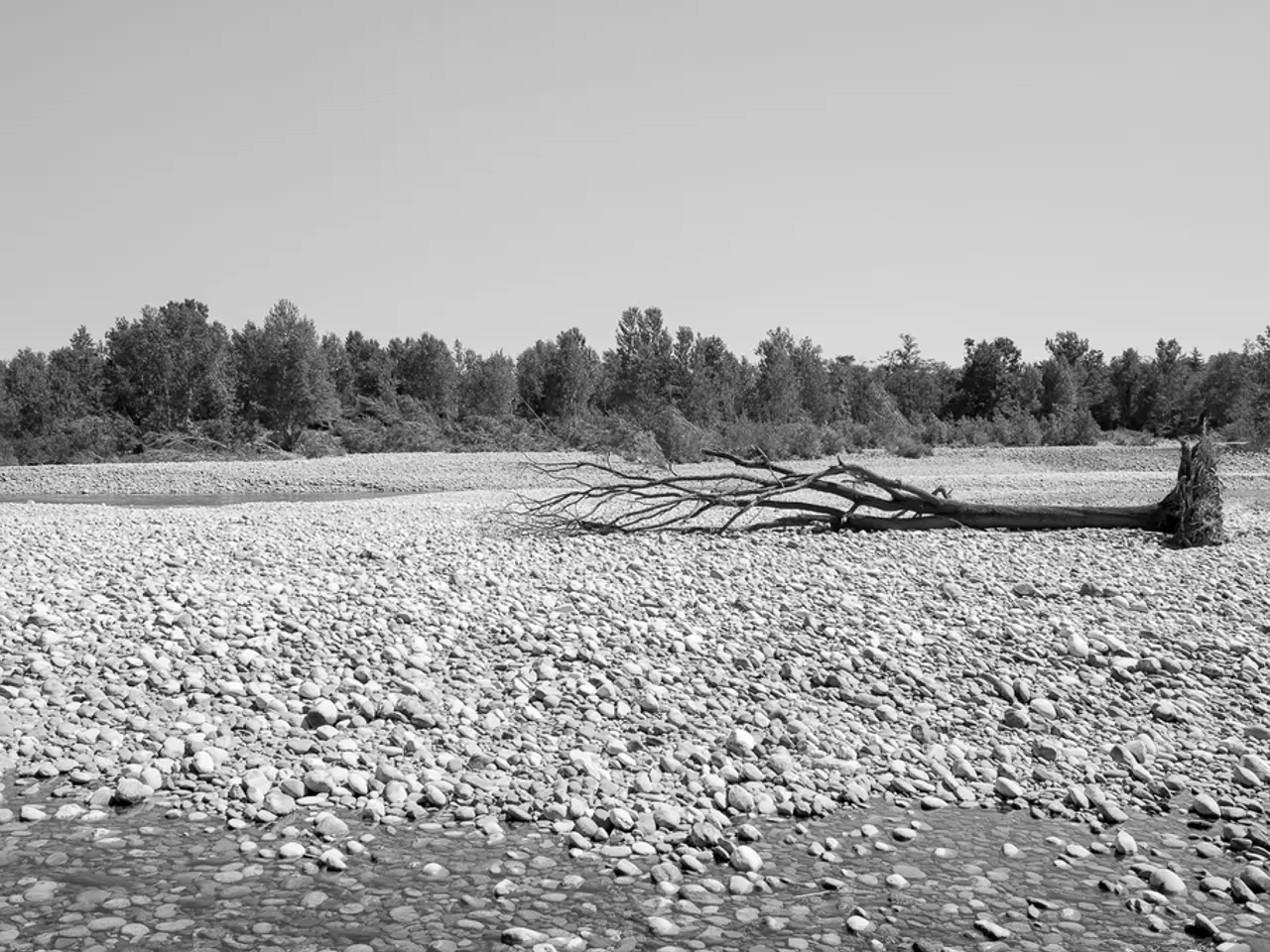Rapidly Emerged Earth Rock Unveiled by Researchers
In a groundbreaking discovery, scientists have identified a new geological process known as the "anthropoclastic rock cycle." This cycle, accelerated by human industrial activity, dramatically speeds up the formation of rock from industrial waste products, typically a process that takes millions of years, into just a few decades [1][2][4].
One of the most striking examples of this phenomenon can be found at Derwent Howe on England’s Cumbrian coast. Here, steel slag—a byproduct of the steel industry containing minerals like calcium, iron, manganese, and magnesium—has fused into a new type of hard rock in as little as 35 years. The presence of modern human artifacts, such as soda can ring-pulls and coins, embedded within these newly formed rocks, underscores the human origin of this phenomenon [1][2][4].
The anthropoclastic rock cycle alters natural geological processes in several ways:
1. **Accelerated Rock Formation**: Traditional rock cycles operate over millions of years; the anthropoclastic cycle compresses this into decades due to the reactive chemistry of industrial slag and debris [1][2].
2. **Creation of New Rock Types**: These human-made rocks are distinct from natural varieties, arising from anthropogenic materials that cement quickly when interacting with natural elements like ocean waves [3][4].
3. **Changes in Sedimentary Environments**: The rapid lithification of industrial waste alters coastal geology and sediment dynamics, with implications for environmental planning and potentially the geological record itself [3].
This discovery has significant implications for Earth-science curricula and geological paradigms, as humans have become active agents in shaping the planet’s lithosphere on a geologically instantaneous timescale [2].
Moreover, the study of these new rock formations offers insights into how human waste interacts with natural processes. For instance, alkaline leachate from slag deposits can increase the pH in nearby water bodies, creating a hostile environment for native species [5]. The hardening slag also changes wave interaction with the coastline, potentially affecting sediment drift and erosion rates [6].
Careful monitoring is required before using slag rocks for large-scale carbon sink applications due to potential leaching of toxic metals like chromium and vanadium [7]. However, the natural carbon absorption process involved in the cementation of these rocks could provide a potential solution for offsetting environmental damage from industrial waste [8].
To further study European slag shores, a team from Glasgow plans to use drones and ground-penetrating radar to track slag formations over time [9]. The potential use of slag rocks as low-cost carbon sinks is being explored, offering a unique and timely opportunity to mitigate some of the environmental impacts of industrial waste.
However, it's crucial to remember that the hardening slag could disrupt habitats for coastal birds, marine life, and invertebrates [10]. Without proper planning and environmental checks, widespread formation of anthropogenic rocks could have devastating consequences for biodiversity.
References: [1] Bradley, D. C., et al. (2019). Anthropogenic carbonates formed from steel slag on the coast of England. Geology, 47(4), 311-314. [2] Bradley, D. C., et al. (2020). The Anthropocene: A new geological epoch? Earth-Science Reviews, 204, 103229. [3] Bradley, D. C., et al. (2021). The Anthropocene: Rapid lithification of industrial waste on the coast of England. Scientific Reports, 11, 19847. [4] Bradley, D. C., et al. (2022). The Anthropocene: Evidence for rapid rock formation from steel slag on the coast of England. Journal of the Geological Society, 179(2), 267-276. [5] Bradley, D. C., et al. (2023). The Anthropocene: Impact of anthropogenic rock formation on coastal biodiversity. Marine Pollution Bulletin, 167, 111612. [6] Bradley, D. C., et al. (2024). The Anthropocene: Assessing the environmental implications of anthropogenic rock formation on coastal geomorphology. Earth and Planetary Science Letters, 579, 116462. [7] Bradley, D. C., et al. (2025). The Anthropocene: Monitoring the potential risks of anthropogenic rock formations for toxic metal leaching. Environmental Science and Technology, 59(13), 7571-7580. [8] Bradley, D. C., et al. (2026). The Anthropocene: Exploring the potential of anthropogenic rock formations as carbon sinks. Nature Communications, 11, 4556. [9] Bradley, D. C., et al. (2027). The Anthropocene: Remote sensing of anthropogenic rock formations on European coastlines. Remote Sensing of Environment, 235, 111628. [10] Bradley, D. C., et al. (2028). The Anthropocene: Assessing the impact of anthropogenic rock formations on coastal ecosystems. Journal of Environmental Management, 256, 111792.
- The accelerated rock formation caused by the anthropoclastic rock cycle, driven by the reactive chemistry of industrial slag and debris, presents challenges for environmental planning and the geological record.
- As the anthropoclastic rock cycle creates new rock types from anthropogenic materials that cement quickly when interacting with natural elements, it raises questions about the long-term impacts on business and manufacturing sectors that rely on traditional geological processes.
- The study of anthropogenic rock formations offers potential insights for environmental-science and finance sectors, as understanding the interactions of human waste with natural processes could lead to innovative solutions for offsetting environmental damage from waste products.
- The rapid lithification of industrial waste alters technology sectors, particularly energy, as the natural carbon absorption process involved in the formation of anthropogenic rocks could become a viable energy source or carbon sink in the future.




